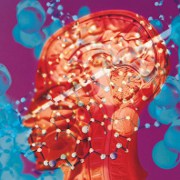 Stockbyte/Thinkstock
Stockbyte/Thinkstock
An epidural hematoma is a brain hemorrhage that occurs when an artery bursts between the dura (the outermost layer of meninges surrounding the brain) and the cranium. This is commonly caused by trauma, such as a vehicle accident.
Up to 20 percent of people with head injuries have an epidural hematoma. However, it can be caused by other things such as:
• Daily aspirin
• Anticoagulants
• Assault
• Dystocia (difficultly) during birth
• Diseases of the skull
• Malformations of the dura
• Alcoholism
• Old age
Taking aspirin or anticoagulants can thin your blood and increase the risk of bleeding. Infants who have traumatic deliveries are also at risk of bleeding in the brain.
Up to 50 percent of people with epidural hematomas initially experience alterations in consciousness or sleepiness and they then seemingly recover, only to collapse later because the bleeding continues, causing increased intracranial pressure and possibly brain herniation.
Occasionally the injured person may present normally in the initial time period after impact. This is called the lucid interval.
Symptoms
Symptoms are:
• Headache that keeps increasing in severity
• Drowsiness
• Progressive loss of consciousness
• Vomiting
• Increased blood pressure
• Unequal pupil size
• Weakness down one side
• Confusion
• Seizures
• Unconsciousness
If you or your child have had a fall or other injury to the head, it is important to monitor wellbeing. If you notice any of the listed symptoms, seek immediate medical advice.
Diagnosis
Doctors will treat progressive loss of consciousness after an impact as a bleed in the skull. The type can be confirmed by use of MRI or CT scan.
Treatment
Epidural hematomas are treated surgically, unless they are so small they cause no symptoms. A small hole or holes are drilled into the skull and the blood is drained off. If the hematoma is very significant then a portion of the skull may be removed in order to remove the blood.
Seizures are common after head trauma and surgery so doctors may give anti-convulsant medication to prevent or treat seizures. For an adult, recovery can take up to six months. Children are usually more efficient at recovering and may do so faster.
Sources:
Intracranial hematoma, Mayo Clinic. Web. 20 March 2012. http://www.mayoclinic.com/health/intracranial-hematoma/DS00330
Epidural Hemorrhage, Medscape Reference. Web. 20 March 2012. http://emedicine.medscape.com/article/248840-overview#a0101
Joanna is a freelance health writer for The Mother magazine and Suite 101 with a column on infertility, http://infertility.suite101.com/
She is author of the book, "Breast Milk: A Natural Immunisation", and co-author of an educational resource on disabled parenting.
Reviewed March 20, 2012
by Michele Blacksberg RN
Edited by Jody Smith






Add a CommentComments
There are no comments yet. Be the first one and get the conversation started!